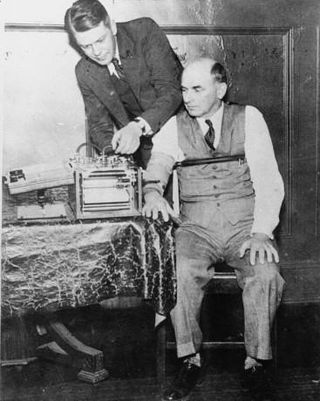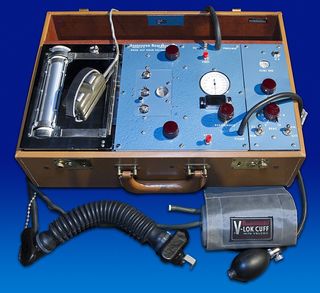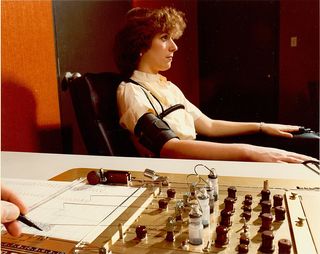Hunters haul hundreds of hogs at Hallettsville contest - Victoria Advocate
Hunters haul hundreds of hogs at Hallettsville contest - Victoria Advocate |
| Hunters haul hundreds of hogs at Hallettsville contest - Victoria Advocate Posted: 23 Jul 2020 09:11 PM PDT  Harry White, 36, of Harwood, has been hunting wild hogs for over two decades. He monitors between 30 and 40 game cameras and hunts from Del Rio on the Mexican border to Elgin, east of Austin. In preparation for last weekend's second annual Central Coast "All In" Hog Contest, run out of Hallettsville, he and his teammates, Brandon and Dayland Pape, spent 300 hours scouting out the biggest hogs in the region. On Friday evening, their preparation was put to the test. Using thermal gun scopes, White and the Papes began scouring Gonzales and Caldwell counties at 6 p.m. After 14 hours hunting that night, a three-hour power nap and another 15 hours hunting the next afternoon and night, they returned to Hallettsville with a prize-winning haul: five hogs weighing an average of 235 pounds, good for first place in the thermals category. White and his teammates each earned an engraved buckle, part of more than $22,000 in cash and prizes awarded on Sunday. Guy Hester, 37, of Hallettsville, started the contest last year to settle an argument with a friend over the best way to hunt hogs: guns or dogs. He runs the tournament with friends Nathan Davis and David Schlamb. This year, more than 160 competitors from as far as Corpus Christi, Livingston and San Antonio turned out. "For 48 hours, I've got over 120 of the state's meanest and finest hog-killing machines working for me," Hester said the week prior to the tournament, as signups kept rolling in. Hunting took place across the region and competitors had to pass a polygraph test to ensure they abided by tournament regulations, Hester said. He's seen other tournaments where competitors raise hogs in trailers in advance, which was not allowed for this contest. "That's not what we're trying to do," Hester said. "I'm not trying to transplant hogs. I'm trying to put a dent in 'em and slow 'em down." This year's competitors made a pretty big dent, killing 416 hogs weighing nearly 19,000 pounds. The biggest hog killed was 253 pounds gutted. The "longest cutter," or longest tooth, measured seven and a half inches and came from a hog Hester described as a "total freak." A new prize this year was awarded for the smallest hog, and the winner brought home a two pound baby that cashed out at $400 a pound. Wild hogs are notorious for destroying agricultural property. According to the United States Department of Agriculture, feral swine breed faster than any other large mammal. They dig holes, damage field crops and transmit diseases to domestic livestock. Nonetheless, Hester and White said they respect and even admire hogs despite the destruction they wreak. "A hog is a wild animal. It lives free. It does what it needs to do to maintain its life. You need to respect that," White said. "I respect them as much as most people probably respect their house dog." White said government policy — rather than hogs — deserves the blame for the challenges American farmers face. "This country might have been self-sufficient 100 years ago, but now, if you took the overseas farms away, this country would never survive. I don't think the hogs personally created the reputation that they get. I think the economy and the government bodies created a poor economy, so a little loss (of crops) is a large loss," White said. "If you grew 100 acres of corn and half the corn was demolished from hogs, you would want 'em gone." Now, thanks to Hester's contest, Texas has several hundred fewer hogs than it did last week. But with a dog team bagging the five heaviest hogs last year and thermals getting the job done this year, the debate between guns and dogs continues, Hester said Wednesday. One thing is for sure: there will be more hogs around next year to hunt, no matter how competitors choose to do so. |
| Do Lie Detector Tests Really Work? - Psychology Today Posted: 14 Jan 2020 12:00 AM PST In February of 1994, the FBI arrested Aldrich Ames, who had been a CIA employee for 31 years. Ames was arrested and charged with espionage. He was a Russian spy. For nine years, he had been passing secrets to the Russians in exchange for over $1.3 million. His spying activities had compromised dozens of CIA and FBI operations. Worse yet, his treacherous crimes had led to the deaths of several CIA spies and the imprisonment of many more. During the time that Aldrich Ames was operating as a Russian spy, the CIA had twice given him a lie detector test. Despite having no special training in how to defeat a lie detector test, Aldrich passed both times.  Source: wikimedia The modern polygraph, better known as the "lie detector test," is a fascinating little instrument with a long and controversial history. The earliest version a polygraph instrument was developed in 1921 when John Larson cobbled together previously developed measures of respiration, heart rate, and blood pressure that had individually shown promise as a measure of lying. Technological developments continued, and the modern polygraph is now an integrated, state-of-the-art, computerized system that continuously monitors blood pressure, heart rate, respiration, and perspiration. The theory behind the polygraph is that when people are lying, they experience a different emotional state than when they are telling the truth. Specifically, it is thought that when people are lying, especially in high stakes scenarios such as police interrogations, they are anxious or afraid of being caught in a lie. When guilty people are asked questions that would reveal their guilt (e.g., Where were you last Tuesday?), and they lie, the fear of being detected causes increased activation of their sympathetic nervous system. This activation leads to an increase in heart rate, blood pressure, respiration, and perspiration. These changes are part of the fight-or-flight system that initiates whenever was are scared. You have probably felt your heart pounding or your palms sweating when faced with danger, be it a vicious dog, an angry boss, or an upcoming exam.  Source: wikimedia The polygraph is designed to detect those subtle changes in a person's physiological responses when they lie. The general idea is that when a person is being honest, their physiological responses remain stable under questioning, whereas a guilty person's heart will race. One of the most common polygraph procedures is called the comparison question test (also called the control question test). The examinee is asked relatively benign questions such as "Where do you live." They are also asked questions that are not relevant to the crime, but which would likely trigger an emotional reaction such as, "Have you ever told a lie?" They are then asked questions about the alleged crime such as, "Did you steal the documents?" The premise of the comparison question test is that a guilty person will have a much stronger physiological reaction to the crime question, whereas an innocent person will not. The polygraph is used in criminal investigations, although it is generally not admissible as evidence in a trial. It is also used as a pre-employment and continuing employment screening tool for many federal employees who work in sensitive positions, such as CIA agents and FBI agents. Private businesses, however, cannot force their employees to submit to a polygraph test. So, does the polygraph actually work? Are the results accurate? It does work much of the time. Typically, when someone is lying, a well-trained polygraph examiner can tell. It is not 100% accurate though. The American Polygraph Association is the world's leading association dedicated to the use of evidence-based scientific methods for credibility assessment. It is an organization whose members are largely polygraph examiners. They estimate the accuracy of the polygraph to be 87%. That is, in 87 out of 100 cases, the polygraph can accurately determine if someone is lying or telling the truth. That sounds pretty impressive, but it is important to keep in mind that the polygraph is failing 13% of the time. The federal government sought an unbiased evaluation of the polygraph, so they tasked the National Academy of Sciences with a full investigation of the polygraph's accuracy. In 2003, this large team of notable scientists came to the conclusion that the polygraph was far less accurate than the polygraph examiners had claimed. Some scientists have claimed that the accuracy may be closer to 75%. This lackluster performance is the reason why polygraphs are not used as evidence in criminal trials. They just cannot be trusted.  Source: wikimedia For more clear evidence that the polygraph is unreliable, just look back to the Alrich Ames case mentioned at the top of this article. Ames lied during his polygraph examinations at the CIA, and he passed each time. In this case, the lie detector test failed. When asked how he passed the polygraph test, Ames said that he followed the advice of his Russian handlers. They told him, "Just relax, don't worry, you have nothing to fear." The Russians knew that the polygraph was flawed. They knew that it was only accurate if the examinee was worried and anxious. They knew that if Ames could just relax, he would pass. |
| You are subscribed to email updates from "how to pass a polygraph" - Google News. To stop receiving these emails, you may unsubscribe now. | Email delivery powered by Google |
| Google, 1600 Amphitheatre Parkway, Mountain View, CA 94043, United States | |
Comments
Post a Comment